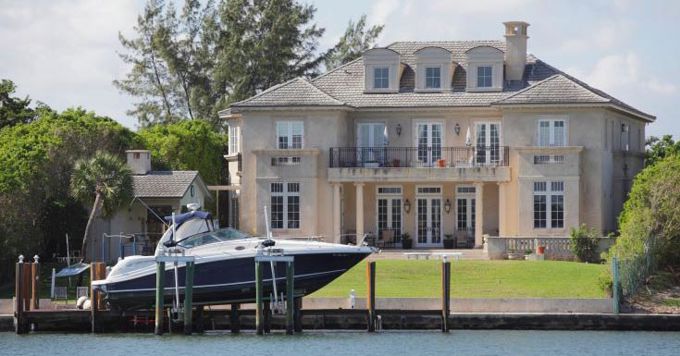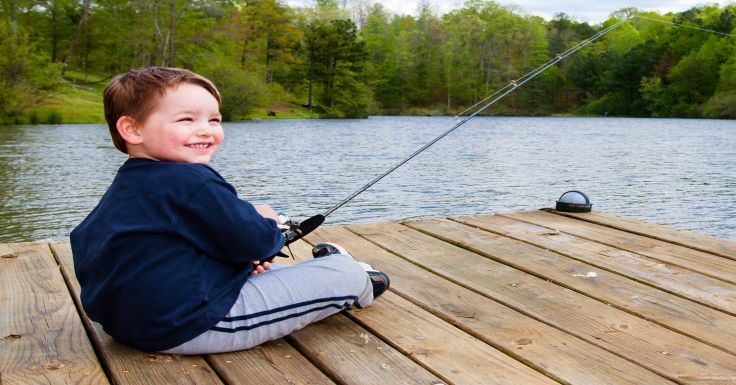
Riparian Rights Explained - What Are Riparian Rights in Virginia?
What Are Riparian Rights? Why Do They Matter?
Riparian property rights (or simply riparian rights) is a legal system that allocates the right to use water and bottomland among waterfront property owners. This impacts you. If you do not own waterfront property then you probably do not have any riparian property rights. If you are a waterfront property owner you probably paid anywhere from 25% to 45% extra to acquire your waterfront property (we have already shared the economic studies showing the extra cost of waterfront as compared to non-waterfront property). You could have saved a lot of money by purchasing that non-waterfront property across the street, but you paid the higher price because you wanted the land plus the riparian property rights. These riparian property rights are a package of five specific benefits available to waterfront property owners under Virginia law. We will cover all five benefits later in more detail, but before we do, here’s the basics.
Virginia Riparian Rights Explained By An Experienced Lawyer
Riparian property rights are the reason that people pay (a lot) extra to live “on the water” in Virginia. Companies in Virginia also pay extra to operate “on the water” because riparian property rights are valuable to the business. Let’s take a closer look at what your Waterfront Property Rights are in Virginia and the benefits that can come along with them.
Riparian Property Rights Under Virginia Law
To let you know where we are heading in this article, let’s start by giving you the list of the five benefits that make up the package of riparian property rights under Virginia law:
- The right to enjoy the natural advantages conferred upon the land by its adjacency to the water.
- The right of access to the water
- The right to build a pier out to the navigable part of the water
- The right for the size of your property to expand through a natural process called “accretion”
- The right to make a reasonable use of the water as it flows past or washes up on the land.
Another key piece to remember in Virginia is that riparian rights can be withheld by a prior owner.
Can Riparian Rights Be Withheld?
An owner of waterfront property normally owns riparian property rights, except where the riparian rights were withheld by a prior owner as documented in the chain of title for the property (a process called “severing” the riparian property rights from the land). Because riparian property rights can be severed from the land and because title insurance companies may draft a riparian rights title exception, a person thinking about purchasing waterfront property should check with a riparian property rights attorney before making the purchase. The attorneys on our Waterfront Property Law Team know how to help you with this.
The Benefits of Owning Waterfront Property
Let’s take a closer look at the package of benefits that are included with riparian property rights under Virginia law.

(Ekaterina Kondratova / Shutterstock.com)
1. The Right to Enjoy The Natural Advantages Conferred Upon The Land By Its Adjacency to The Water
Our clients often tell us that the view of the water, as seen from their waterfront property, is one of the greatest natural advantages that comes with owning waterfront property. Waterfront property owners also attach great importance to recreational amenities, such as swimming, fishing and boating. If you want to know whether you can stop others from swimming, fishing and boating in the water next to your waterfront property, we have three articles that explain your riparian property rights. We describe in general terms the level of control that Virginia law provides to the waterfront property owner who is concerned about the activities of others in the water near his or her waterfront property, the control a waterfront property owner on a lake or pond in Virginia has, and the control a waterfront property owner on a creek, river, bay or seashore in Virginia has.

(Sianc / Shutterstock.com)
2. The Right Of Access to The Water
Riparian property rights protect the waterfront property owner’s ability to operate a boat at the property by providing him or her a right of access to the water. This right specifically includes a right of way to and from the navigable part of the waterway. Having access from the shore to the line of navigation is an important part of riparian property rights.
3. The Right to Build a Pier or Dock Out to The Navigable Part of The Water
Riparian property rights also protect the waterfront property owner’s ability to operate a boat by providing him or her the right to build a pier or dock. This is important to the waterfront property owner because oftentimes the water close in to shore is too shallow for a boat. The waterfront property owner overcomes this problem by “piering out” to the deep water. Once the pier or dock is built from the shore out to the deep water, the waterfront property owner can tie up his or her boat at the pier or dock without ever having to operate the boat in any water other than deep water, and then conveniently walk from the boat to the waterfront property. We've mentioned before the right to build a pier or dock under Virginia law is controlled by specific parts of the Virginia Code and is managed by the Virginia Marine Resources Commission (VMRC).
4. The Right For the Size of Your Property to Expand Through a Natural Process Known as Accretion
The waterfront property owner owns land with fixed boundaries as to the upland or “fast” land. The waterfront boundary at the shoreline is quite different. It shifts under the influence of the water which can deposit extra soil along the shoreline in a process known as accretion. When this happens, the size of the waterfront property grows larger. Conversely, the influence of the water can remove shoreline soil in a process known as erosion, resulting in a reduction in the size of the waterfront property. Sea level rise is another factor that can shrink the size of waterfront property. The one thing we know for sure is that water is dynamic and the property boundary of a waterfront property changes over time as the shoreline changes. Our team of waterfront property attorneys is familiar with the several precedents from the courts in Virginia and specific parts of the Virginia Code that come into play when there is a question about the shoreline property boundary at a waterfront property.

(Rob Hainer / Shutterstock.com)
5. The Right to Make a Reasonable Use of The Water as It Flows Past or Washes Up on the Land
During earlier times in Virginia a riparian owner would use flowing water in a river as an energy source to drive a water wheel that operated a sawmill or a gristmill. Today water might be withdrawn from a river or stream to irrigate crops or to water cattle. Another modern example is an electric power generating plant, built next to a river, that withdraws river water to cool equipment inside the plant and returns the water (after it has been heated) to the river. The withdrawal of surface water may require a Virginia Water Protection permit from the Virginia Department of Environmental Quality.
What is a Riparian Area? (Riparian Area Definition)
Riparian property rights apply only within a defined footprint called the “riparian area”, and the riparian area is unique to each waterfront property. It is formed by the shore of the waterfront property on one side and by the line of navigation on the other side. Riparian boundary lines extend out from the shoreline to the line of navigation to complete the formation of the riparian area but it is important to know that these “side” lines of the riparian area are not a straight extension of the upland property boundary lines. Just as every waterfront property is unique, the size and shape of the riparian area is unique to the particular property as well. Establishing the riparian area for a waterfront property in Virginia is a complex job requiring help from a riparian property rights attorney and a hydrographic surveyor working under the supervision of the riparian property rights attorney. The attorneys in our Waterfront Property Law team have helped numerous waterfront property owners who needed to establish the riparian area at their property. We are very familiar with the numerous Virginia case precedents that control how this is done.
Riparian Property Law and the Bottomland
Riparian property rights may or may not include ownership of the bottomland (the land submerged under the water). This depends on factors such as whether the waterfront property is located on a lake or pond, as opposed to a creek, river, bay or seashore. Other factors can come into play also, one of them being whether the body of water is navigable, or whether the bottomland was conveyed into private ownership by the British Crown in the time prior to the American Revolution (under a so-called “King’s Grant”), or whether the bottomland was conveyed into private ownership at some point after the American Revolution. This is a complex area of the law but we tried to break it down for you. We go over the topic in general terms, bottomland ownership for a waterfront property owner on a lake or pond in Virginia, and bottomland ownership for a waterfront property owner on a creek, river, bay or seashore in Virginia.
More Information on Riparian Rights
What are littoral rights?
Littoral waters are static (as opposed to waters that are flowing). Ocean waters, though tidal, are considered littoral. Other examples of littoral waters include a sea, a bay, a lake or a pond. Conversely, flowing rivers, creeks and streams are riparian waters. Under Virginia law, riparian property rights attach to lands in contact with littoral waters in a manner no different than lands that are in contact with riparian waters.
What’s the difference between Riparian Rights and Littoral Rights?
Under Virginia law, riparian property rights attach equally to properties in contact with riparian and littoral waters. One interesting and important difference, however, is that the bottomland beneath two categories of littoral waters -- lakes and ponds -- are privately owned whereas the bottomland beneath most riparian waters (with some exceptions) are owned by the Commonwealth of Virginia. As explained in another article in this blog, ownership of the bottomland gives the waterfront property owner a greater ability to control activities on the waters next to his or her waterfront property, in addition to the benefits associated with ownership of riparian property rights.
The importance of waterfront property lines and how they can impact your riparian rights
When purchasing a waterfront property in Virginia, it’s important to fully understand where the property lines are located, especially at the shoreline. Unfortunately, even though a property looks like it is waterfront, there is a chance that someone else owns the land between the property and the water. When this happens, buyer’s remorse sets in because there are no riparian property rights at that property. This means that the owner cannot build a dock or pier, has no right of access to the water, and that the property is worth 25% to 45% less than would have been the case if it was riparian. Another unhappy possibility comes about with land that touches the water but a prior owner “severed” the riparian property rights in the legal chain of title. The experienced attorneys in our Waterfront Property Law team can help you understand whether a property is in contact with the water for legal purposes, and whether ownership of the riparian property rights remains intact in the chain of title.
In Conclusion
Owning waterfront property is a dream-come-true for many, but it can also be complicated. If you are thinking of buying waterfront property, or if you have any other concerns about riparian property rights, contact Jim Lang and his team of waterfront lawyers. We’re standing by and ready to help navigate your unique situation.
